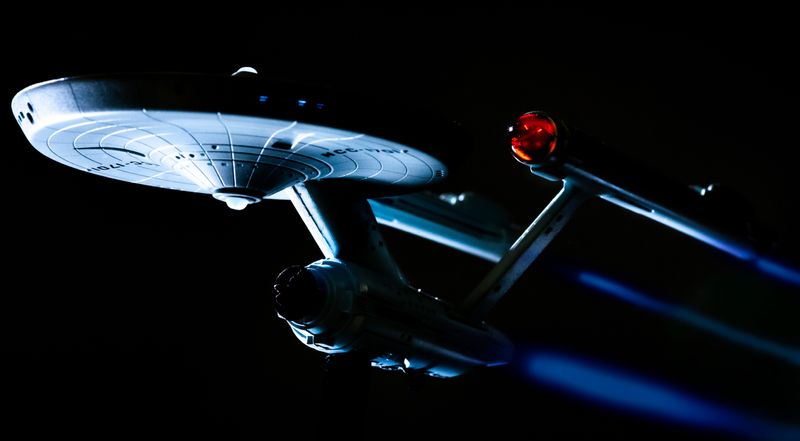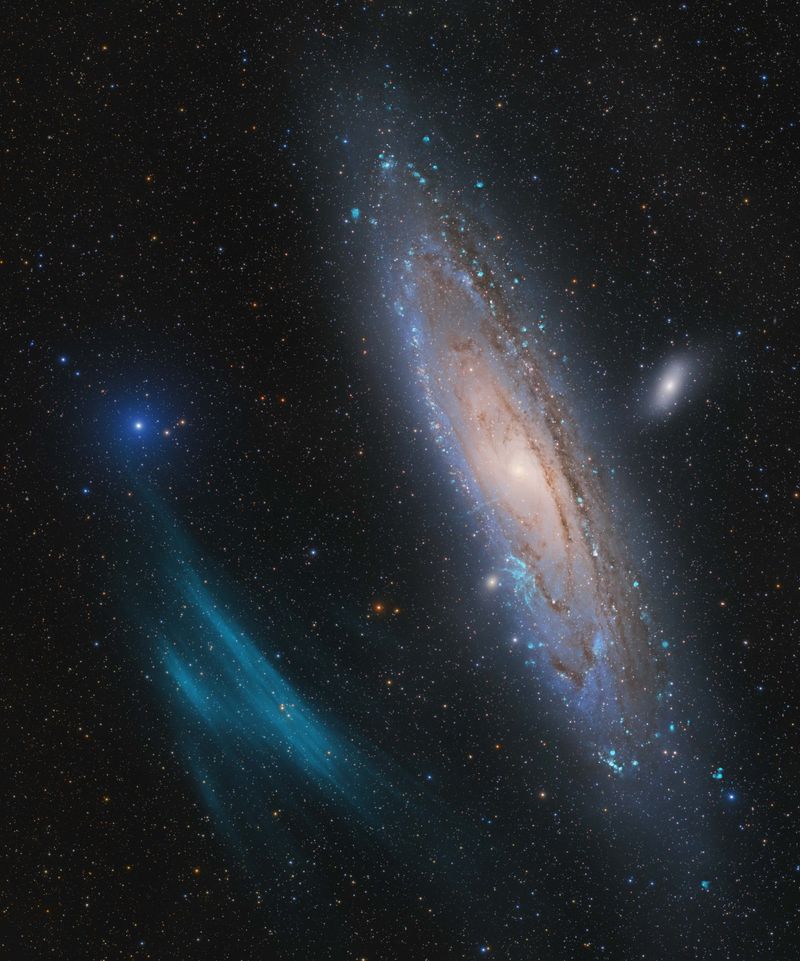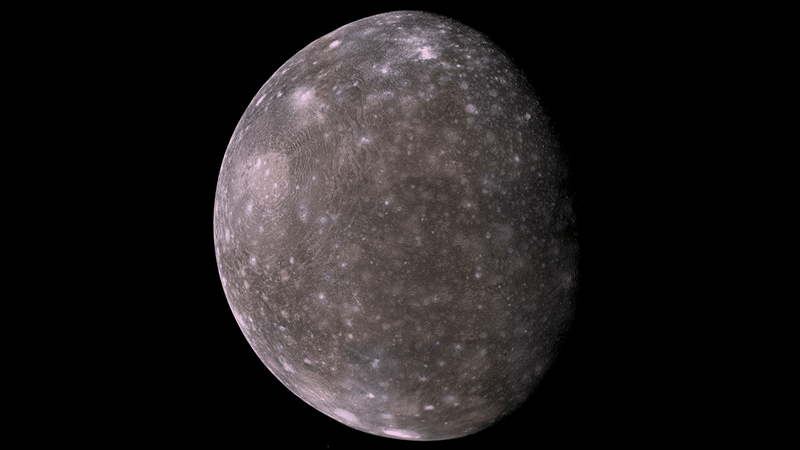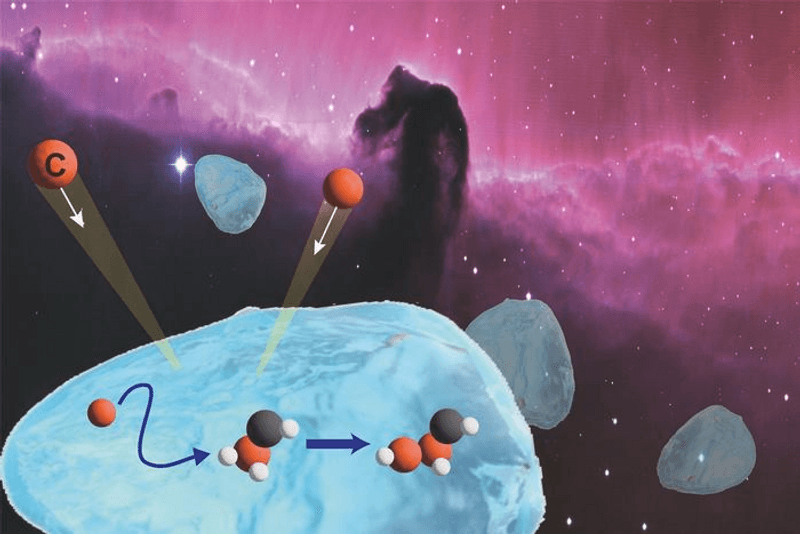September 8 is Star Trek Day, the 57th anniversary of the first broadcast of the groundbreaking original television series. IFLScience recently attended Destination Trek in the UK to speak with Chris Lee, the first Chief Scientist at the UK Space Agency. The challenge we put to him is how he envisions the near future of space exploration, and if we are getting any closer to Star Trek.
The answers may disappoint impatient space enthusiasts, but Lee’s views come from 40 years in the field – he recently retired from the UK Space Agency, is a visiting Professor at the University of Leicester’s Institute for Space, and a Board Member of the Astrobiology Unit at the Open University – and reveal there is plenty to be excited about in the near future. According to him, this is what space exploration is going to be like in the short term.
What is the current state of space exploration?
I believe we're living in a golden age of space exploration, but I have to explain what I mean by that. There are two sorts of space exploration. There's robotics and there's humans. At the moment, the robotics exploration program is incredible, and the UK is playing a very, very important part in that.
In the UK alone, companies and universities are involved in missions going to the Sun, going to Mercury, and going to Jupiter. And of course, we have instruments on JWST which is one of the most incredible space telescopes that has ever been built. Robotic exploration has never had such a high profile with the public. Human spaceflight on the other hand is much more challenging. We all know about the Apollo program over 50 years ago, but apart from the International Space Station, not a lot has happened since then.
Why do you think there is this massive disparity between robotic and human exploration?
Space is incredibly challenging for the human body. We're not built for space. We have to protect astronauts. This takes highly reliable technology and that means money, typically 10 times the cost of a robotics mission. This means programs are going to take much longer to deliver than if we were, say, just sending a rover to the surface of the Moon.
Also we still expect governments to foot the human exploration bill. So another challenge is funding - if you go into any finance ministry and explain to them they should be investing taxpayers' money to send a person to the Moon, they will always ask: “What's the benefit?”. It's then hard to offer measurable economic reasons why humans should go to the Moon when robotics can do things so much more quickly and so much more cheaply and perhaps in 20 or 30 years, so much more smartly.
The other problem is “purpose”. For years we have talked about sending astronauts back to the surface of the Moon and then to Mars, but we rarely ask the question “for what purpose?”. What happens after they land and who then pays? Now, space agencies have a plan and it’s called Artemis.
The NASA-led international Artemis mission will see the return of humans to the surface of the Moon in this decade, including the first woman and the first person of color. China is also planning to land humans on the Moon in the 2030s. How does Artemis differ from Apollo?
Apollo was effectively a one-shot. The US just wanted to get a person on the surface of the Moon and then get them back, before the Russians. It was really a single-act play. Cold War geopolitics. Now we have China looking likely to repeat this feat and so US eyes turn back once more to the Moon and then Mars. But Congress and other organizations around the world will not fund a return simply to land, plant a flag, turn around, and come back, from either place.
So human space exploration is at a very important crossroads. If we're going back to the Moon, we have to go back there to stay. And to do that, we will have to demonstrate two things. First of all, can we actually send humans to a surface and not just keep resupplying them with resources like food and water? Can they land there and eventually live off that land? And secondly, can they create a new economy so that they can pay their own way?
Space is very expensive and we owe it as a duty of care to taxpayers that we show the benefits that come from space exploration. And that is really the plan of Artemis; to demonstrate that space is sustainable and it is not going to be a burden on future taxpayers. We will be expecting commercial organizations to step up to the plate and fund key technologies. It’s going to be interesting to see if this really happens.
So, human exploration currently looks dangerous and expensive. But rovers and landers must have drawbacks too. What are they?
The answer is they have very few drawbacks! However, one issue is they're not as quick and intelligent as a trained astronaut. They take time to deliver the science, but we have time. One could argue that a geologist would do in 45 minutes what the rover did on Mars over a year, but the robots work long days and over many years and they do not face the same life dangers. And Artificial Intelligence is moving at such a pace that they are already our true “Space Explorers” – literally “boldly going where no one has been before”.
What could be an important change in space exploration in the next 20 to 50 years?
One major concern is the speed of access to a destination, whether you are a robot or a human. It takes nine months to get to Mars or several years to get to Jupiter. Traveling around the Solar System is limited by the speed of the rocket. You can forget going to other star systems.
I see a lot of attention being invested in new rocket propulsion, probably nuclear, which will halve the time to some of these more distant locations, and that will benefit any explorer, be they a robot or an astronaut. But the other important thing is the cost. Costs have to fall. Without this, space exploration will remain the domain of the robotic scientist. But that is still cool!




